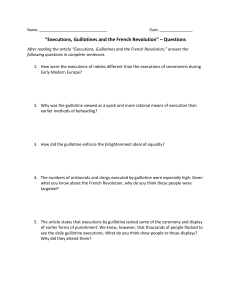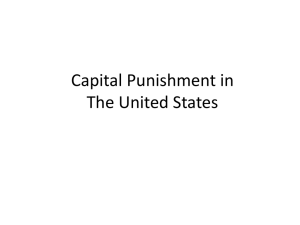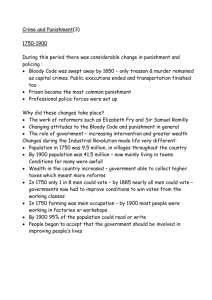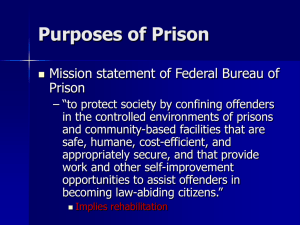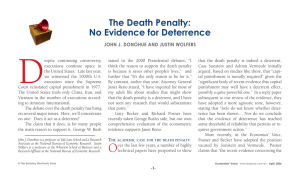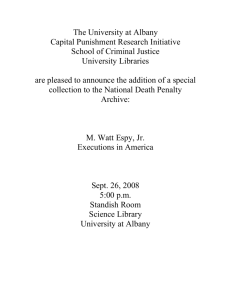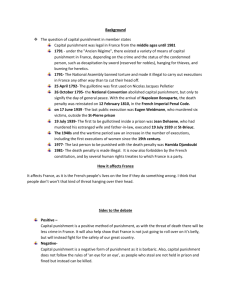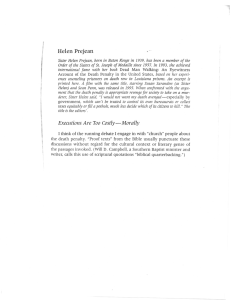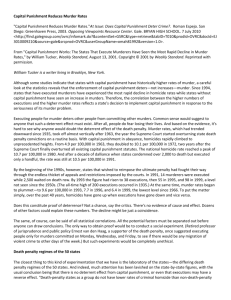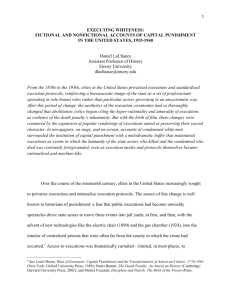abstract here - Columbia Law School
advertisement
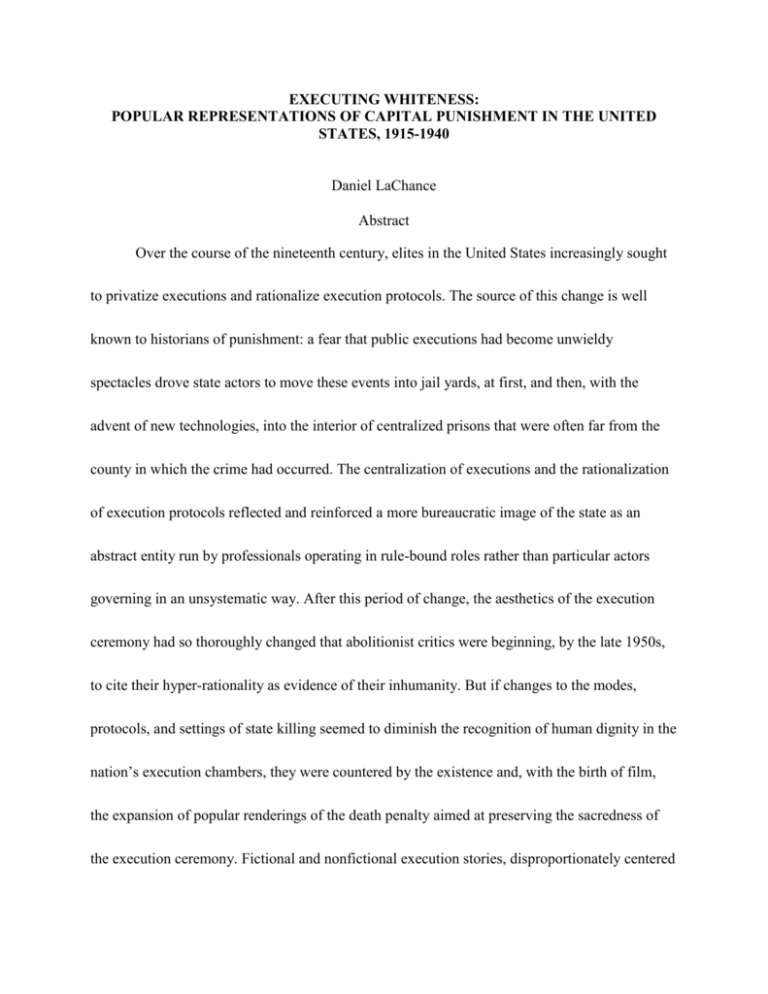
EXECUTING WHITENESS: POPULAR REPRESENTATIONS OF CAPITAL PUNISHMENT IN THE UNITED STATES, 1915-1940 Daniel LaChance Abstract Over the course of the nineteenth century, elites in the United States increasingly sought to privatize executions and rationalize execution protocols. The source of this change is well known to historians of punishment: a fear that public executions had become unwieldy spectacles drove state actors to move these events into jail yards, at first, and then, with the advent of new technologies, into the interior of centralized prisons that were often far from the county in which the crime had occurred. The centralization of executions and the rationalization of execution protocols reflected and reinforced a more bureaucratic image of the state as an abstract entity run by professionals operating in rule-bound roles rather than particular actors governing in an unsystematic way. After this period of change, the aesthetics of the execution ceremony had so thoroughly changed that abolitionist critics were beginning, by the late 1950s, to cite their hyper-rationality as evidence of their inhumanity. But if changes to the modes, protocols, and settings of state killing seemed to diminish the recognition of human dignity in the nation’s execution chambers, they were countered by the existence and, with the birth of film, the expansion of popular renderings of the death penalty aimed at preserving the sacredness of the execution ceremony. Fictional and nonfictional execution stories, disproportionately centered around the execution of white men, offered evidence to those who did not have direct access to executions that modernity had not fully captured the soul of punishment. In newspapers, on stage, and on screen, accounts of condemned men surrounded the institution of capital punishment with a melodramatic buffer that maintained executions as events in which the humanity of the state that killed and the condemned who died was constantly foregrounded, even as execution modes and protocols themselves became rationalized and machine-like.

